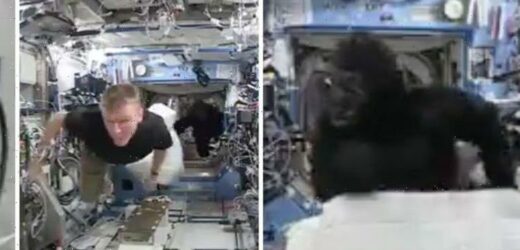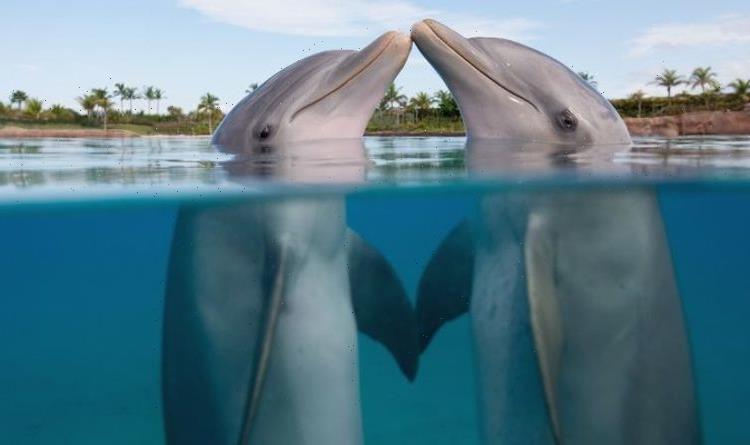Tim Peake gets chased by a 'gorilla' aboard the ISS in 2016
We use your sign-up to provide content in ways you’ve consented to and to improve our understanding of you. This may include adverts from us and 3rd parties based on our understanding. You can unsubscribe at any time. More info
In a hilarious video, British crew member Tim Peake can be seen scrambling as he tries to escape the gorilla. But it was actually an elaborate prank from American engineer Scott Kelly. Back in 2016, Mr Kelly had the suit sent into space on a resupply mission.
He then hid from Mr Peake in a soft-side storage container that he was operating on.
Mr Scott carried out the prank to celebrate his year in space mission.
He spent a total of 340 days in space, the equivalent of 5,000 orbits around Earth.
At the time, he tweeted: “Needed a little humour to lighten up a #YearInSpace.


“Go big, or go home. I think I’ll do both. #SpaceApe”
Filmmaker Todd Spence brought the memory back when he shared the footage on Twitter.
He said: “Astronaut Mark Kelly once smuggled a full gorilla suit on board the International Space Station.
“He didn’t tell anyone about it.
“One day, without anyone knowing, he put it on.”

The video has amassed 40,000 retweets and 182,000 likes, with many commenting that it had made them laugh.
One reply read: “I really hope at least a few people watching from Earth had no idea this was coming.”
Another added: “Whose idea was it to bring a gorilla suit to the space station? That person needs to be put in charge of more things.”
A third chimed: “Haha, it would be funny to know the price of sending a Gorilla suit to the space station.”
It comes as NASA engineers will be celebrating after completing the unfolding of the James Webb space telescope.
DON’T MISS
Covid microchip: UK startup says tech WILL be able to track location [REPORT]
Aztec breakthrough after ‘dark secret’ discovered beneath pyramid [REVEAL]
Yellowstone supervolcano warning after magma chamber discovery [INSIGHT]


The manoeuvre was the final step of the $10billion (£7.35billion) observatory’s two-week deployment phase that began with its launch on Christmas Day.
The telescope, which has already travelled more than 600,000 miles across space, is the largest, most powerful space telescope ever built.
Described as a “time machine” by scientists, the James Webb telescope will allow astronomers to study the beginning of the universe.
The James Webb, named after a former Nasa administrator, still has to travel 400,000 miles to its destination and will then need five more months for its instruments to be carefully calibrated.
It will offer the opportunity to capture images of the first galaxies to form after the Big Bang, understanding how stars are born and evolve, and investigating the potential for life to appear in planetary systems.
Source: Read Full Article


